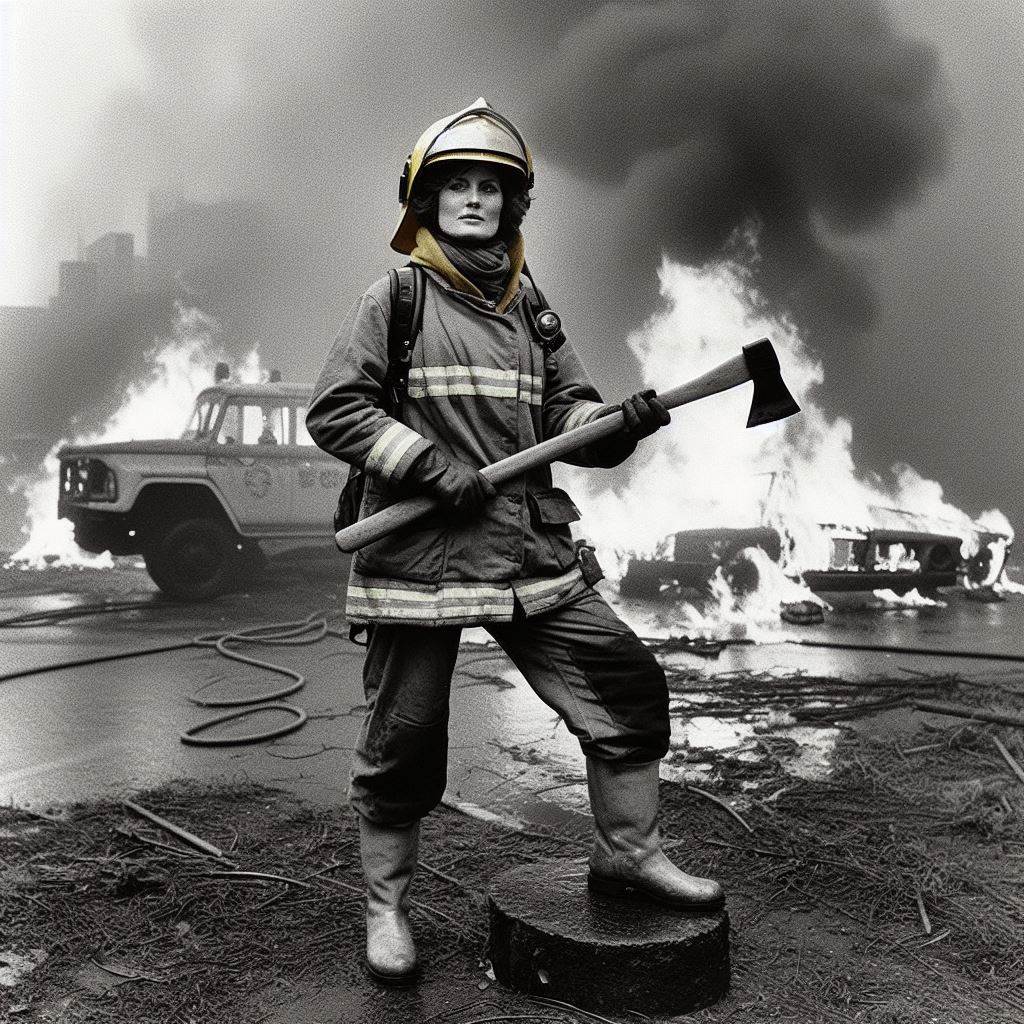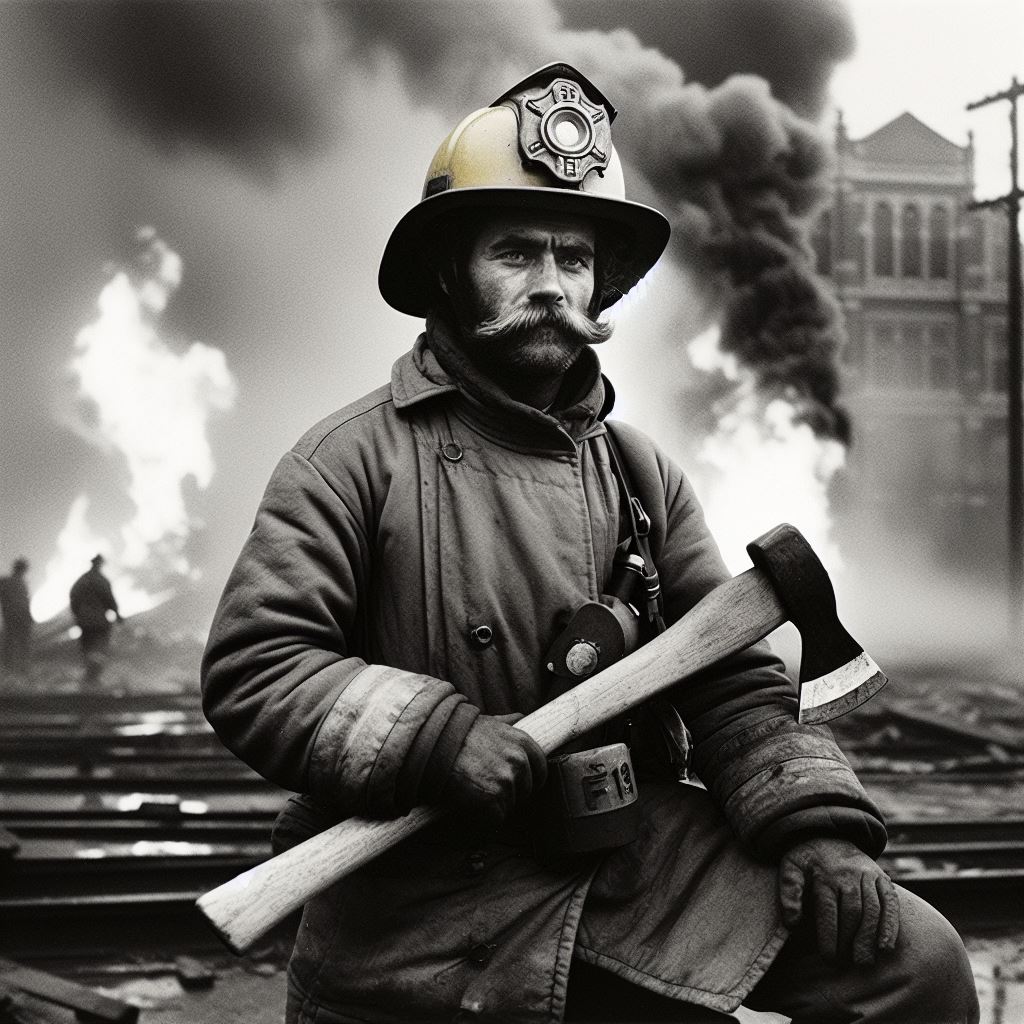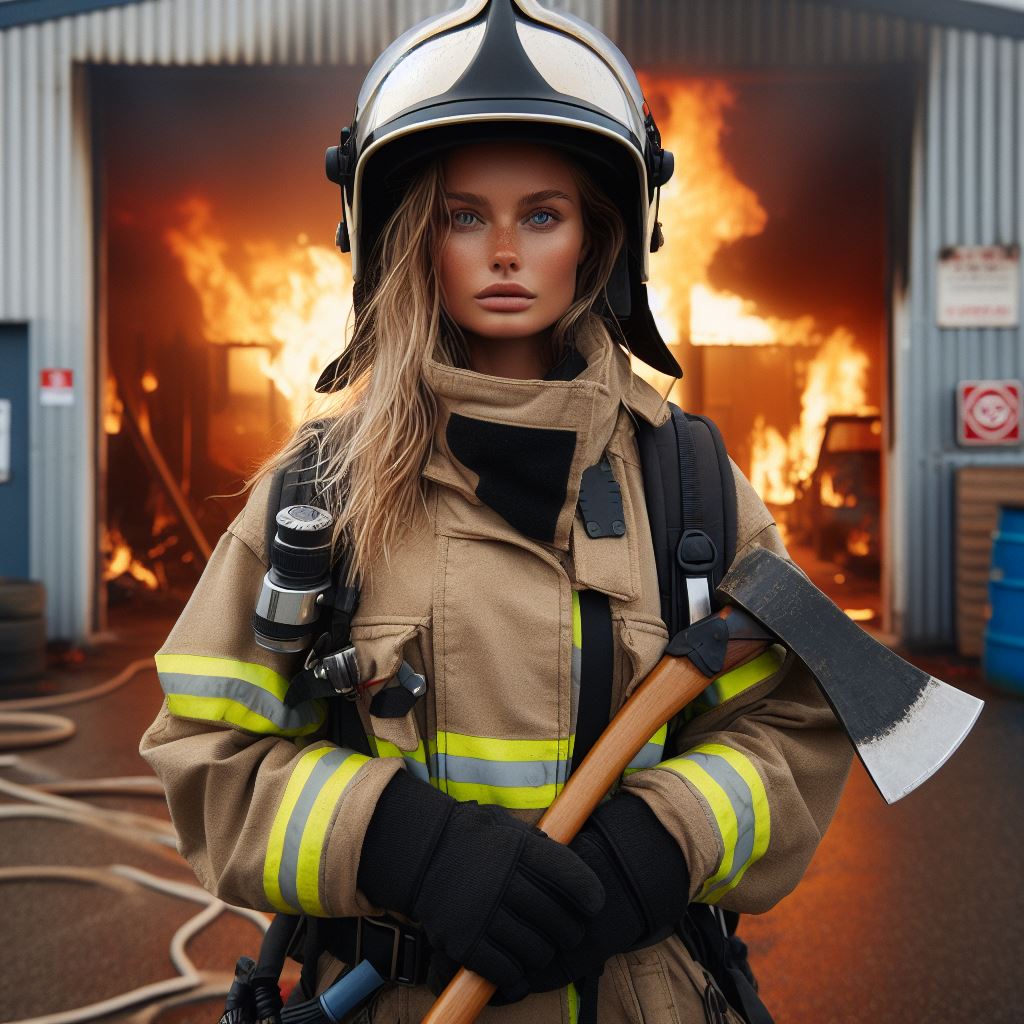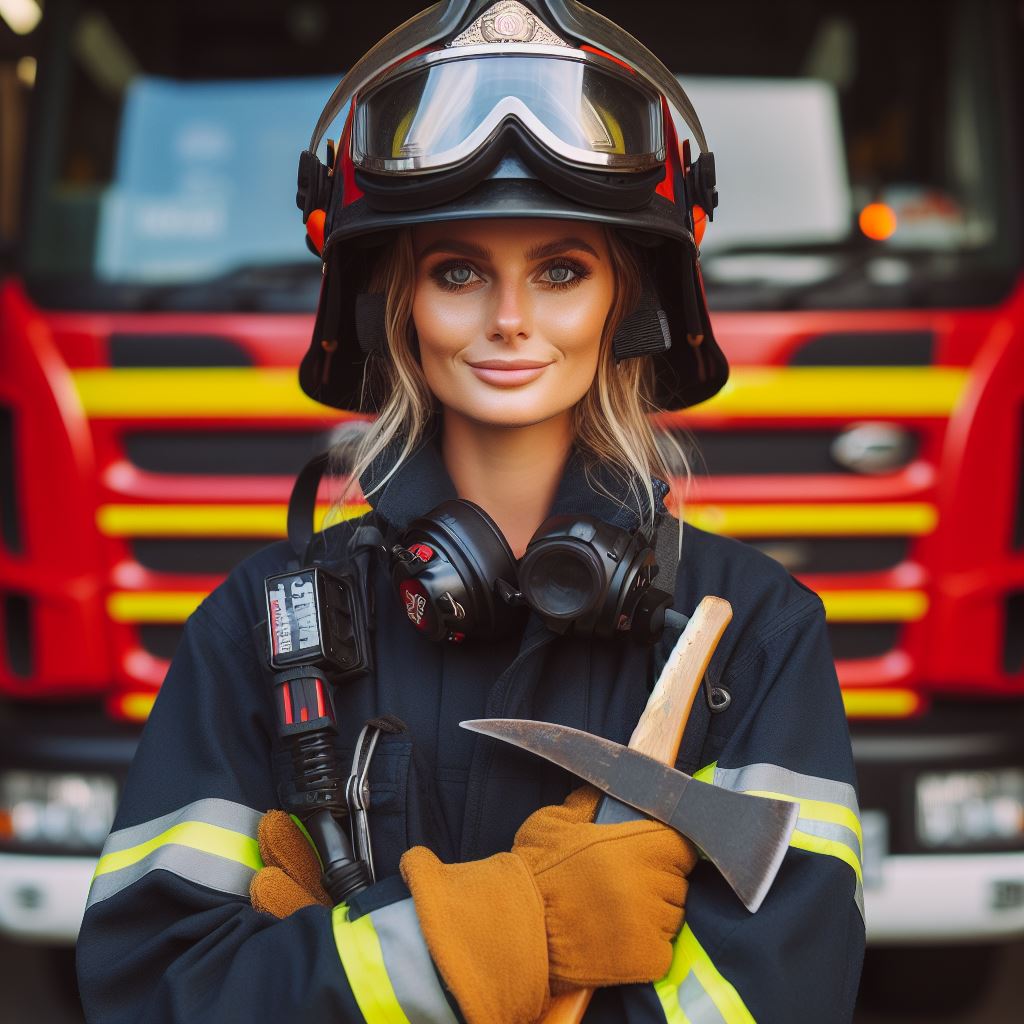Introduction
The history of firefighting in Australia dates back to the early European settlement. This topic is important and relevant because it highlights the development and challenges faced by firefighters in the country.
Since the arrival of the First Fleet in 1788, firefighting techniques in Australia have evolved significantly. Initially, firefighting relied on basic methods such as water buckets and manual dousing.
As the population and cities grew, so did the need for more sophisticated firefighting techniques.
The first organized fire brigade in Australia was established in Sydney in 1825. It consisted of volunteer firefighters who were responsible for responding to fires within the city.
Over time, the concept of professional firefighting was introduced, leading to the establishment of paid fire brigades.
The devastating fires that swept through Australia in the late 19th and early 20th centuries highlighted the need for better fire prevention and firefighting strategies. The introduction of steam-powered fire engines and fire alarms improved the efficiency of firefighting operations.
In the 20th century, firefighting in Australia became increasingly professionalized. Fire departments expanded their resources and expertise, adopting modern firefighting equipment and techniques.
Training academies were established to ensure the skills and knowledge of firefighters were up to date.
Today, Australia faces unique firefighting challenges due to its vast landscape and diverse climate. Bushfires are a constant threat, particularly during the summer months.
As a result, Australian firefighters have become highly skilled in bushfire management and specialized techniques.
The history of firefighting in Australia showcases the evolution of firefighting techniques and the dedication of firefighters in protecting lives and property.
It is a topic of great importance as it sheds light on the development and challenges faced by those who bravely combat fires in the country.
Early Days of Firefighting in Australia
Overview of the early firefighting methods and equipment used in Australia
- During the early days, firefighting was predominantly a community effort.
- Water was sourced from nearby rivers, wells, and dams to extinguish fires.
- Leather buckets were commonly used to transport water to the fire.
- Firefighters would form human chains to pass the buckets along.
- Horse-drawn fire engines, known as steamers, were introduced in the mid-19th century.
- The steamers used steam power to pump water and were more efficient than buckets.
- Volunteer fire brigades started to form in major cities, using steamers and hand-drawn hose carts.
- Fire hydrants became available in the cities, providing a more reliable water source.
- Firefighting later evolved to include horse-drawn aerial ladders and turntable escapes.
- The introduction of motorized fire engines and better firefighting equipment followed.
Key historical events that shaped the early firefighting efforts
- The Great Fire of Melbourne in 1851 highlighted the need for organized firefighting.
- Gold rush era caused a rapid population increase, leading to more fire risks.
- The establishment of volunteer fire brigades in Melbourne, Sydney, and Adelaide.
- The formation of the Metropolitan Fire Brigades Board in Melbourne in 1891.
- The creation of the Country Fire Authority in Victoria in 1945.
Challenges faced by firefighters during this period
- Limited communication systems made it difficult to coordinate fire responses.
- Lack of advanced equipment and technology made firefighting more labor-intensive.
- Volunteer firefighters often struggled with inadequate training and resources.
- Rapid urbanization led to crowded and flammable city structures, increasing fire risks.
- Bushfires were also a significant challenge, particularly in rural areas.
- Early firefighting efforts were hampered by limited access to water in remote regions.
- The lack of fire safety regulations and building codes contributed to fire hazards.
- Extreme weather conditions, such as drought and heatwaves, often intensified fire risks.
- Limited public awareness and education on fire prevention and safety measures.
- High prevalence of volunteer firefighters meant that not all areas were adequately covered.
Read: Diplomatic Immunity: The Basics
Formation of Firefighting Organizations
The history of firefighting in Australia dates back to the early days of European settlement. As the population grew and cities expanded, the need for organized firefighting became increasingly evident.
Establishment of the first firefighting organizations in Australia
The first firefighting organizations in Australia were established in the 19th century. These organizations were primarily volunteer-based and operated on a local level.
Your Personalized Career Strategy
Unlock your potential with tailored career consulting. Get clear, actionable steps designed for your success. Start now!
Get StartedIn 1840, the Sydney Fire Police was formed in New South Wales, marking the birth of organized firefighting in Australia.
This group consisted of volunteers who were tasked with responding to fires in the city.
Other major cities, such as Melbourne and Adelaide, soon followed suit and established their own volunteer firefighting organizations.
These organizations played a crucial role in protecting lives and property during fire emergencies.
Role of volunteer brigades and their contributions
Volunteer firefighting brigades played a significant role in Australia’s firefighting history. These brigades were made up of dedicated individuals who were willing to risk their lives to protect their communities.
Volunteers were responsible for responding to fire emergencies, conducting fire prevention activities, and providing community education on fire safety. They often relied on outdated equipment and lacked the advanced training that exists today, but their commitment and bravery were unparalleled.
Volunteer brigades became an integral part of many Australian communities, fostering a sense of camaraderie and unity among members.
These brigades were often the primary line of defense against fires, as professional firefighting services were not yet widespread.
Introduction of paid firefighting services and their impact
In the late 19th and early 20th centuries, paid firefighting services were introduced in Australia. These services aimed to supplement the work of volunteer brigades and provide a more professional approach to firefighting.
With the establishment of paid firefighting services, cities were able to invest in modern equipment and training. This resulted in improved response times and increased firefighting capabilities.
One of the most significant impacts of paid firefighting services was the establishment of permanent fire stations. These stations were strategically located across cities and staffed with trained firefighters who were on duty 24/7.
The introduction of paid services did not diminish the role of volunteers but rather complemented their efforts. Volunteer brigades continued to play an important role, especially in rural areas where professional services were not readily available.
Over the years, firefighting techniques and technologies have evolved, leading to the creation of specialized firefighting units, such as hazardous materials response teams and urban search and rescue teams.
The history of firefighting in Australia is a testament to the dedication and bravery of both volunteers and professionals who work tirelessly to protect lives and property.
The establishment of firefighting organizations, the role of volunteers, and the introduction of paid services have all contributed to shaping the modern firefighting landscape in Australia.
Stand Out with a Resume That Gets Results
Your career is worth more than a generic template. Let us craft a resume and cover letter that showcase your unique strengths and help you secure that dream job.
Get HiredToday, firefighting in Australia continues to evolve, with ongoing advancements in equipment, training, and emergency response techniques.
It is through the collective efforts of firefighters, both past and present, that the country remains prepared to face the challenges of fire emergencies.
Read: Crisis Management in Diplomacy
Notable Fires in Australian History
Major Fires throughout Australian History
- The Black Thursday Bushfires in 1851 devastated large parts of Victoria, causing significant loss of life and property.
- The Ash Wednesday Bushfires in 1983 were one of the most devastating fire events in Australian history.
- The Canberra Bushfires in 2003 resulted in the loss of four lives and destroyed around 500 homes.
- The Black Saturday Bushfires in 2009 were the deadliest in Australian history, claiming 173 lives and destroying thousands of properties.
Significant Impacts on Firefighting Practices and Policies
These major fires have had a profound impact on firefighting practices and policies in Australia.
- Improved Communication (Black Thursday Bushfires – 1851): Highlighted the need for better communication systems among firefighters, leading to advancements in radios and other communication devices.
- More Efficient Equipment (Ash Wednesday Bushfires – 1983): Exposed the limitations of firefighting equipment, prompting the development of more advanced and efficient tools like aerial firefighting resources.
- Increased Training and Resources (Canberra Bushfires – 2003): Served as a wake-up call for the need to invest in better training and resources for firefighters, resulting in enhanced training programs and increased funding for modern equipment.
- Community Engagement (Black Saturday Bushfires – 2009): Underscored the importance of community involvement in firefighting efforts, leading to greater community education initiatives and volunteer recruitment.
Lessons Learned from these Incidents
Each major fire in Australian history has provided valuable lessons for firefighters and policymakers.
- Early Warning Systems (Black Thursday Bushfires – 1851): Highlighted the importance of early warning systems to alert communities, resulting in the implementation of comprehensive warning systems across the country.
- Fuel Load Management (Ash Wednesday Bushfires – 1983): Emphasized the significance of proper fuel load management to reduce the intensity and spread of fires, leading to the adoption of controlled burn practices.
- Collaboration and Coordination (Canberra Bushfires – 2003): Exposed the need for better collaboration and coordination between firefighting agencies, resulting in the establishment of integrated incident management systems.
- Evacuation Plans (Black Saturday Bushfires – 2009): Demonstrated the critical need for well-planned evacuation strategies, inspiring the development of comprehensive evacuation plans and strategies.
Essentially, major fires in Australian history have significantly shaped firefighting practices and policies in the country. Lessons learned from these incidents have led to advancements in communication, equipment, training, and community engagement.
Early warning systems, fuel load management, collaboration between agencies, and evacuation plans have all improved as a result of these devastating events.
It is imperative to continue learning from past experiences and evolving firefighting strategies to ensure the safety of Australian communities.
Read: Day in the Life of an Aussie Police Officer

Advances in Firefighting Technology and Training
The advancements in firefighting equipment and techniques have greatly improved the effectiveness of fire response.
Introduction of modern firefighting methods and technologies
Modern firefighting methods have revolutionized the way fires are dealt with in Australia.
- The introduction of fire suppression agents such as foam and gaseous agents has significantly improved extinguishing capabilities.
- The development of fire-resistant materials and structures has also played a crucial role in preventing the spread of fires.
Highly efficient firefighting equipment
Advancements in firefighting equipment have enabled firefighters to tackle fires more effectively
- The invention of fire hoses with adjustable nozzles allows for better control and precision in directing water flow.
- Portable fire extinguishers are now lightweight and easier to handle, making them accessible to more individuals.
- Thermal imaging cameras enable firefighters to locate hotspots and rescue victims even in low visibility conditions.
Improved communication and coordination
The use of modern communication technology has greatly enhanced the coordination between fire departments during emergencies
- Radios and satellite phones provide instant and reliable communication between firefighters on the ground and command centers.
- GPS tracking allows for accurate mapping of the fire scene and helps formulate effective response strategies.
Training and professional development
The importance of ongoing training and professional development cannot be emphasized enough in the firefighting community
- Regular training exercises enable firefighters to stay updated with the latest techniques and equipment.
- Simulation-based drills provide realistic scenarios for firefighters to practice their skills in a controlled environment.
- Continuing education programs ensure that firefighters remain knowledgeable about new firefighting methods and safety protocols.
Collaboration and knowledge sharing
Firefighting organizations across Australia actively collaborate and share their knowledge and experiences
- National conferences and workshops provide a platform for firefighters to learn from each other’s best practices.
- Research institutions work together with firefighting agencies to develop innovative solutions and improve existing technologies.
- International partnerships allow for the exchange of information and expertise, contributing to the overall advancement of firefighting techniques.
In general, the advances in firefighting technology and training have significantly improved fire response in Australia.
The introduction of modern firefighting methods, highly efficient equipment, improved communication, ongoing training, and collaboration have all played a pivotal role in enhancing the firefighting capabilities in the country.
As the field continues to evolve, it is crucial for firefighters to embrace these advancements by actively participating in training and professional development programs, allowing them to effectively combat fires and protect lives and property.
Transform Your LinkedIn for Maximum Impact
Elevate your professional brand with a LinkedIn profile that attracts recruiters, showcases your expertise, and maximizes opportunities. Stand out in your industry with a profile built for success.
Boost ProfileRead: How to Become a Police Officer in Australia
Gain More Insights: Essential Skills for Diplomatic Staff
Learn More: Key Skills Needed for Policy Analysts in AU
The Evolution of Firefighting Policies and Regulations
The development and implementation of fire safety standards in Australia
Fire safety standards in Australia have evolved significantly over the years, aiming to protect lives and properties. Initially, in the early days of colonization, firefighting was a community-driven effort with little regulation.
However, as cities and towns grew, the need for formal firefighting policies became evident. In the late 19th century, they introduced the first fire safety standards, emphasizing building construction and fire prevention measures.
These early policies emphasized the development of fire-resistant materials, construction techniques, and the provision of firefighting equipment.
With the creation of fire brigades in major cities, a more organized approach to firefighting emerged.
These brigades played a vital role in not only extinguishing fires but also in raising awareness about fire safety.
The role of government agencies in formulating and enforcing firefighting regulations
Government agencies have played a crucial role in formulating and enforcing firefighting regulations in Australia.
At the national level, agencies such as the Australian Building Codes Board (ABCB) have been responsible for setting fire safety standards.
These standards form part of the National Construction Code (NCC) and are regularly reviewed and updated.
How these policies have contributed to the improvement of firefighting practices
Firefighting policies and regulations have significantly contributed to the improvement of firefighting practices in Australia.
Clear guidelines established policies, ensuring buildings resist fire in their design and construction.
This has resulted in reduced fire risks and increased occupant safety. Fire safety standards have prompted the use of advanced fire detection and suppression systems.
These systems have improved the efficiency and effectiveness of firefighters in responding to emergencies. In addition, regular safety inspections and compliance checks help maintain the overall effectiveness of fire safety measures.
Overall, the evolution of firefighting policies and regulations in Australia has been marked by an increasing focus on prevention and preparedness. Today, fire safety standards cover a wide range of areas, including building design, evacuation procedures, and the maintenance of fire safety equipment.
Efforts are also being made to educate the public on fire safety and the importance of prevention. As the threat of fire continues to evolve, so must Australia’s firefighting policies and regulations, ensuring the ongoing protection of lives and properties.
Current Challenges and Future Outlook
Challenges faced by firefighters in Australia
- Increasing frequency and intensity of wildfires due to climate change.
- Limited resources and funding to adequately address fire emergencies.
- Rapid population growth, leading to increased urbanization and fire risks.
- Difficulty in accessing remote and rural areas during firefighting operations.
- Health risks for firefighters due to exposure to smoke, toxins, and extreme heat.
Emerging trends in firefighting and fire prevention
- The use of drones for capturing real-time data and monitoring fire incidents.
- Implementation of advanced technology, such as thermal imaging cameras, to detect and locate fires.
- Growth of community education programs to promote fire safety and prevention measures.
- Integration of artificial intelligence and machine learning in fire prediction and management.
- Increased collaboration between different firefighting agencies and sharing of resources.
The future of firefighting in Australia and the potential impact of climate change
- The need for continuous improvement in firefighting techniques and strategies to adapt to changing fire behavior.
- The development of more efficient fire-resistant building materials and designs.
- Enhanced early warning systems and communication networks to alert and mobilize communities.
- Greater emphasis on prescribed burning and fuel management to reduce fire risks.
- The potential for longer and more severe fire seasons, requiring increased preparedness and resources.
Ultimately, firefighters in Australia face numerous challenges in their efforts to protect lives and property from fires. Climate change, limited resources, and population growth are contributing factors.
However, emerging trends in firefighting techniques and the advancement of technology offer hope for improved fire prevention and response.
The future of firefighting in Australia will require continual adaptation and innovation to address the potential impacts of climate change on fire behavior.
Conclusion
The history of firefighting in Australia has highlighted several key points. The country formed early fire brigades to combat devastating fires that plagued it initially.
Secondly, advancements in technology and equipment have greatly improved firefighting capabilities. The establishment of national firefighting organizations has allowed for more efficient coordination during emergencies.
It is important to recognize the significant progress made in firefighting in Australia over the years. From the humble beginnings of volunteer brigades to the sophisticated operations of today, the country has developed a robust firefighting system.
Understanding the history of firefighting is crucial as it allows us to appreciate the dedication and sacrifice of those who came before us. It also provides valuable insights into the evolution of firefighting techniques and the continuous need for innovation.
Comprehending the history of firefighting enables us to comprehend the challenges faced by the profession. Climate change and increasing urbanization pose new threats, demanding constant adaptation and preparedness.
By learning from the past, we can better address the present challenges and strive for a safer future.
The history of firefighting in Australia serves as a reminder of the importance of unity, preparedness, and continual improvement.
It is through a comprehensive understanding of the past that we can effectively protect lives, property, and our natural environment in the face of fires.




